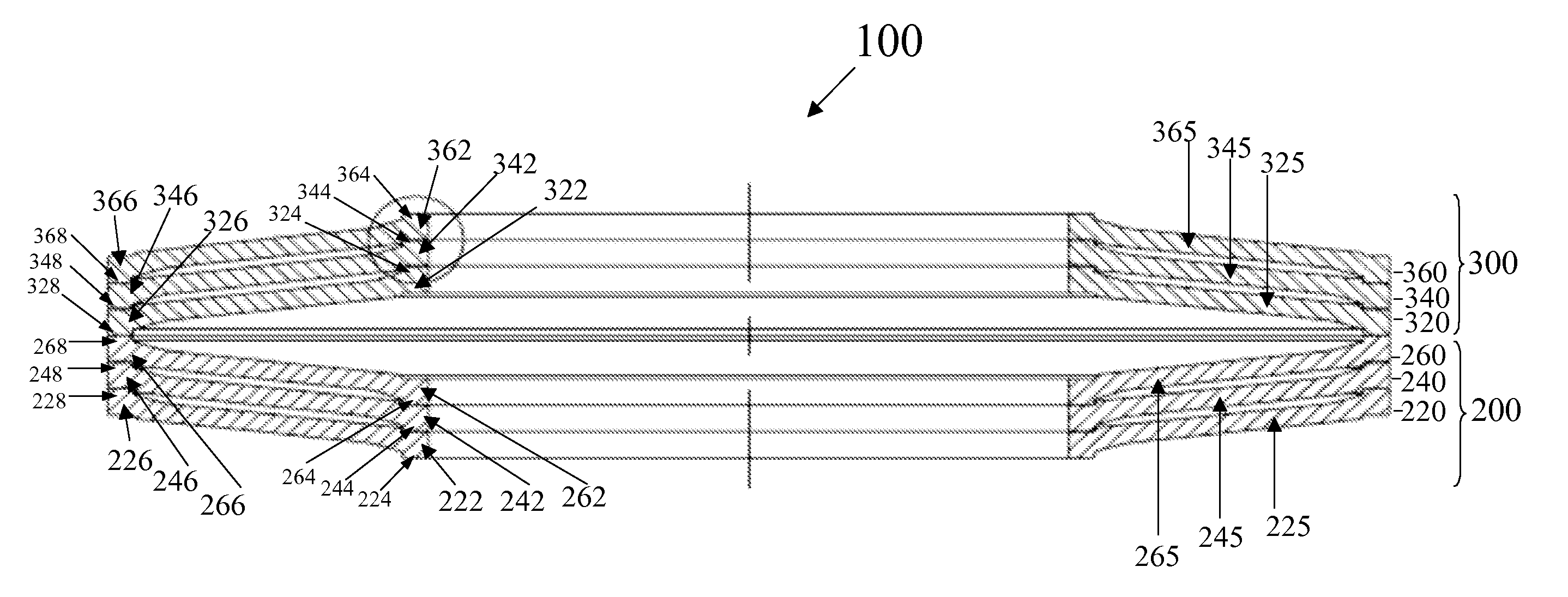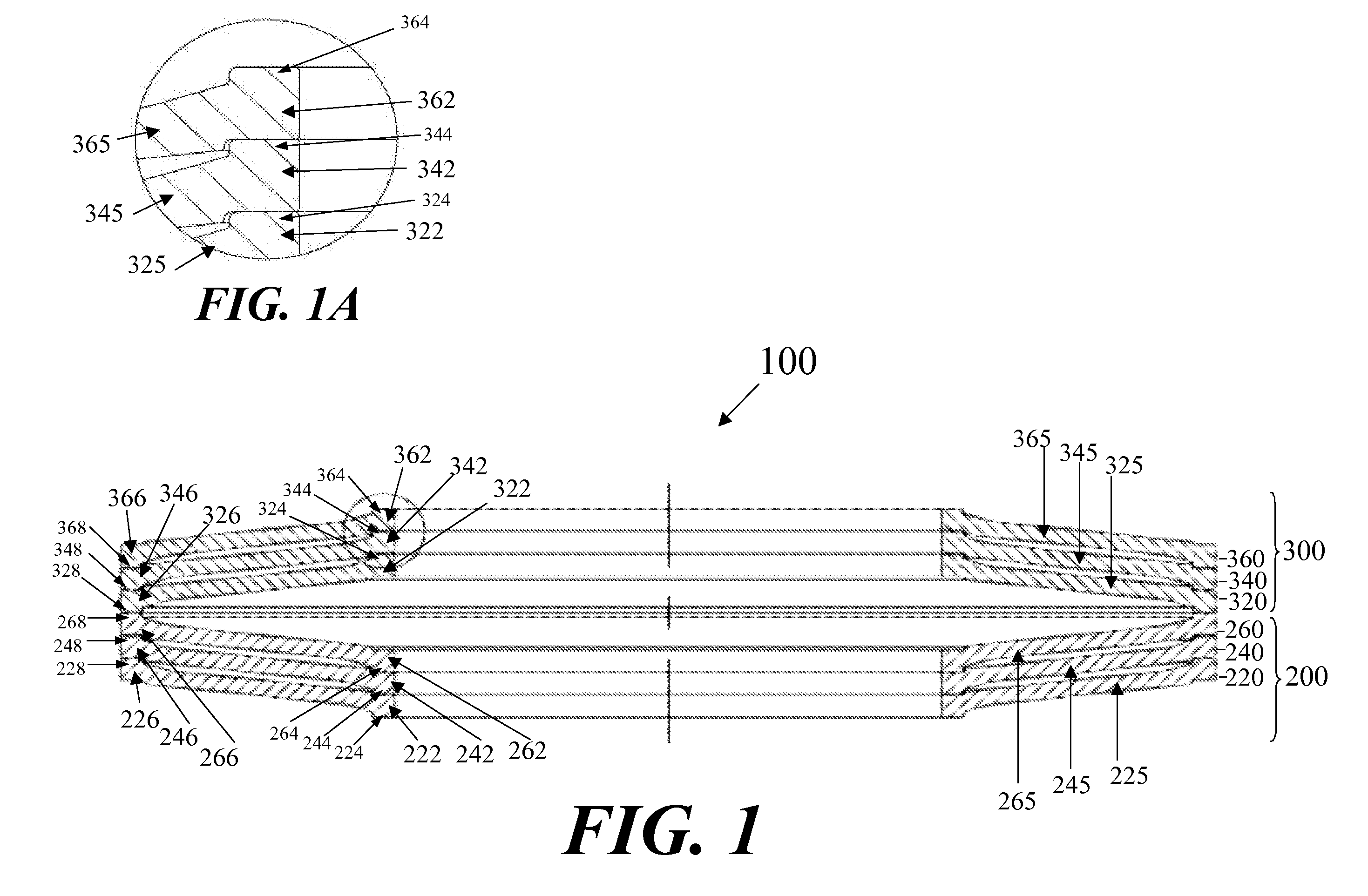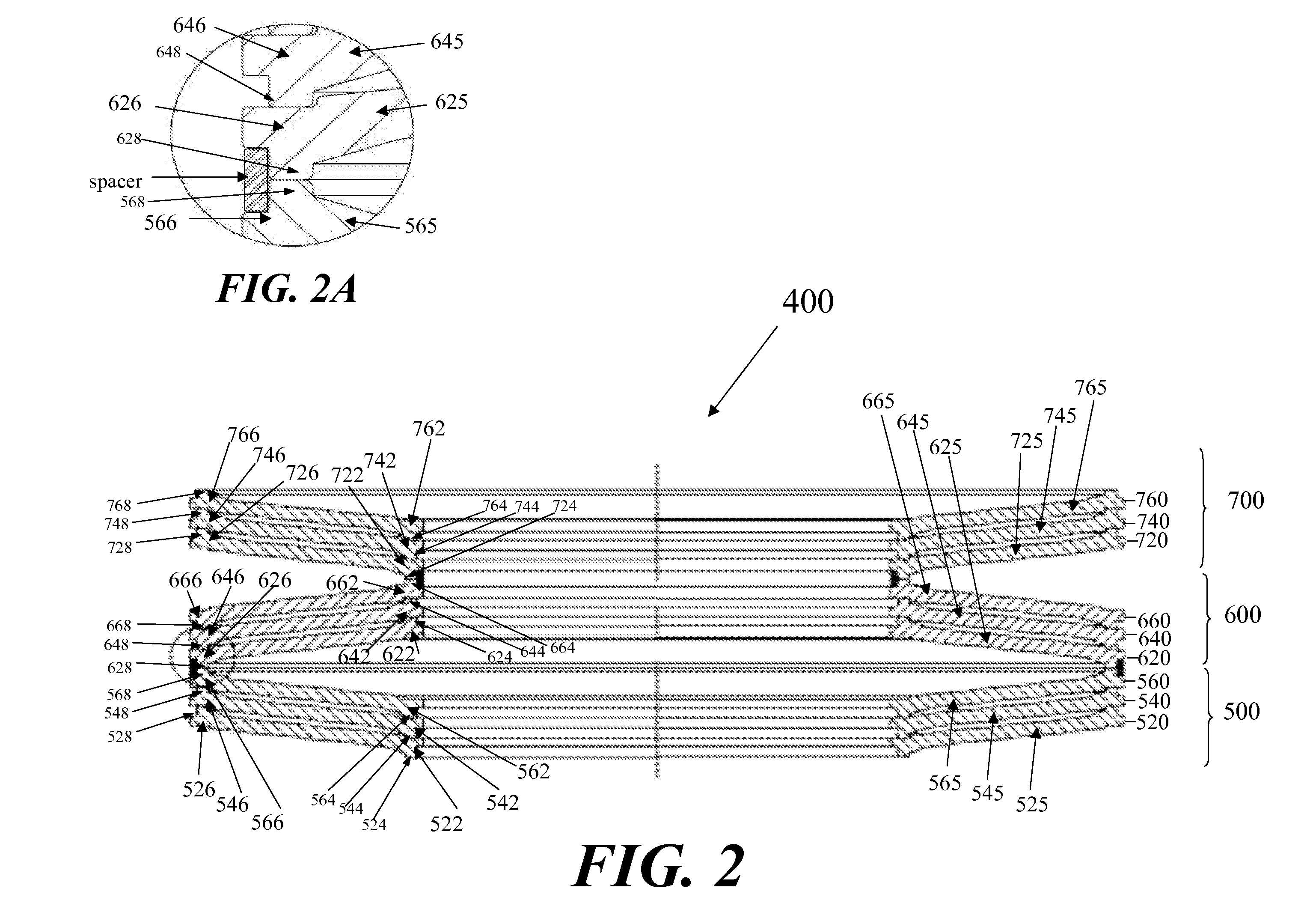Stackable belleville spring
a technology of belleville springs and stacks, which is applied in the direction of ring springs, other domestic objects, transportation and packaging, etc., can solve the problems of premature failure of disc spring configurations and friction wear, and achieve the effect of avoiding friction wear and avoiding friction wear between the surfaces
- Summary
- Abstract
- Description
- Claims
- Application Information
AI Technical Summary
Benefits of technology
Problems solved by technology
Method used
Image
Examples
Embodiment Construction
[0020]The disc springs and disc spring stacks of the present invention include a plurality of generally conically-shaped disc springs in which adjacent disc springs fit together and are held together in axial alignment. The disc spring stacks generally comprise a ring-shaped configuration and include an outer peripheral edge, which may be positioned within a cylindrically-shaped cavity or tube (not shown), and an inner edge, which may be positioned about a shaft or aligning rod (not shown). The disc springs may optionally be interlocking, which feature would allow the assemblies to be used without any confining cylinder or shaft in order to hold the disc springs in alignment, particularly under an axial load applied to the disc spring stack.
[0021]FIG. 1 illustrates a disc spring stack 100, in accordance with the present invention, having a first assembly 200, and a second assembly 300, with said assemblies stacked in series with one another. In general, stacking assemblies of disk s...
PUM
| Property | Measurement | Unit |
|---|---|---|
| Friction | aaaaa | aaaaa |
Abstract
Description
Claims
Application Information
 Login to View More
Login to View More - R&D
- Intellectual Property
- Life Sciences
- Materials
- Tech Scout
- Unparalleled Data Quality
- Higher Quality Content
- 60% Fewer Hallucinations
Browse by: Latest US Patents, China's latest patents, Technical Efficacy Thesaurus, Application Domain, Technology Topic, Popular Technical Reports.
© 2025 PatSnap. All rights reserved.Legal|Privacy policy|Modern Slavery Act Transparency Statement|Sitemap|About US| Contact US: help@patsnap.com



